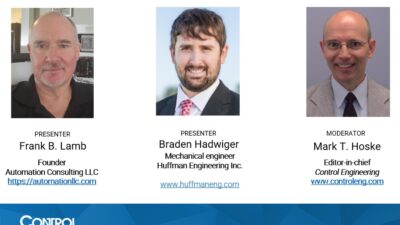When the German government introduced new wastewater treatment regulations several years ago, engineers at the 25-year-old Düsseldorf South Water Treatment Facility faced a C 116-million upgrade project to satisfy the rules, called Abwasser Technische Verordnung (ATV).In 1994, plant engineers began implementing new secondary wastewater treatment processes, Belebungsbecken—a tra...
When the German government introduced new wastewater treatment regulations several years ago, engineers at the 25-year-old Düsseldorf South Water Treatment Facility faced a C 116-million upgrade project to satisfy the rules, called Abwasser Technische Verordnung (ATV).
In 1994, plant engineers began implementing new secondary wastewater treatment processes, Belebungsbecken—a traditional aerobic process that mixes wastewater with naturally occurring, biologically active microorganisms that consume organic waste components. This biological nitrification/ denitrification is accelerated with injections of compressed air. Wastewater temperature and pH are the two crucial parameters measured and controlled during this process.
The main innovation included in Düsseldorf South’s upgrade was implementing nitrification/denitrification in one simultaneous process. Wastewater swirls through five, flat, open-air, 23,200-m3tanks divided into four channels with oxygen supplied by compressed air blown in by four turbines. The plant’s engineers estimate they were able to save about C 30 million by using PC-based control and PLC-related supervisory control and data acquisition (SCADA) technology, along with help from local industries.
New control, visualization
Main contractor for the project, Schneider Electric Germany, selected systems integrator Inotronics GmbH as subcontractor to implement the plant’s new process control system using P-CIM software from Afcon Projects (84) Ltd. The entire control system upgrade, including communication links, was installed from January to May 1999.
Twenty workstations running P-CIM supervise, manage, collect, and display process data in a control room, throughout the plant, and even at Düsseldorf’s city hall. The control system handles 16,000 I/O points, which will be expanded soon to 35,000. Eighteen redundant pairs of Schneider’s Telemecanique TSX-7 PLCs—working in a redundancy configuration—also handle process control. All controllers are linked to the control room via fiber-optic cable.
The plant’s PC-based visualization system on the 20 workstations is connected to redundant sets of data servers via a redundant 100 Mb Ethernet fiber-optic communications network. Response time is reportedly less than 0.5 sec. One operator can work with as many as 10 different screens. At night—when input variation is lowest—three operators can control the entire plant. To ensure communication system reliability, dual network cables, hubs, PLCs, and software redirecting support, were also implemented. Real-time data are read into the communication server, stored in the archive server, and distributed to the operation workstations.
To reduce process variation and move the plant from continuous empirical process to a batch control operation, the engineers use the new SCADA software to track and plot input variables and results. They want to formulate recipes for different “batches” of water received, which can vary according to season, rainwater amounts, and proportions from private homes, businesses, and manufacturing facilities.
P-CIM also allows the plant’s PC-based SCADA system to perform historical data collection into an SQL data server, which allows the engineers to study and refine the treatment process. And, as the process moves from continuous to batch control, recipe management is allowing engineers to dynamically modify a recipe’s structure and values.
For more information, visit www.afcon-inc.com ; visit www.schneiderelectric.de ; or visit www.controleng.com/freeinfo .
Control Engineering Europe staff based on a visit to the site and technical information supplied by Thomas Wagner, Inotronics GmbH, Köln, Porz-Urbach, Germany.
ONLINE
For an expanded version, see Control Engineering Europe, January-February 2000, at



